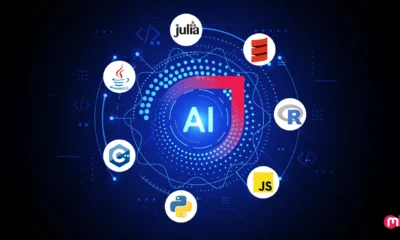AI
AI Empowerment: How Teachers are Shaping the Future of Engineering with PromptOps

The Rise of Gen AI: The Importance of Proper Onboarding for AI Systems
As more companies rapidly adopt gen AI technology, it is crucial to avoid a common mistake that could hinder its effectiveness: neglecting proper onboarding. While companies invest time and resources in training new human employees for success, many tend to overlook the need for thorough onboarding of large language model (LLM) assistants. Treating AI systems as simple tools without adequate explanation not only wastes resources but also poses significant risks. Research indicates that AI has transitioned from testing to widespread use between 2024 and 2025, with nearly a third of companies experiencing a significant increase in AI adoption compared to the previous year.
Probabilistic systems require governance, not wishful thinking. Unlike traditional software, gen AI is probabilistic and adaptive, learning from interactions and operating in a gray area between automation and agency. Failing to monitor and update these models can lead to degradation and faulty outputs, a phenomenon known as model drift. Additionally, gen AI lacks inherent organizational intelligence and may produce inaccurate results if not properly trained on specific organizational requirements. Regulators and standards bodies are increasingly providing guidance on managing AI systems to prevent issues such as misinformation, bias, and data leakage.
The consequences of inadequate onboarding for AI systems can be significant. Instances of misinformation, liability, embarrassing errors, bias at scale, and data leakage have been reported in various industries. For example, a Canadian tribunal held Air Canada liable for incorrect information provided by its AI chatbot, highlighting the responsibility companies have for their AI agents’ actions. To avoid such pitfalls, organizations must treat AI agents like new hires and implement thorough onboarding processes.
Enterprises should approach AI onboarding with the same level of diligence as they do with human employees. This involves defining roles, providing contextual training, simulating scenarios before deployment, and creating cross-functional mentorship programs. Role definitions should outline the scope, inputs/outputs, escalation paths, and acceptable failure modes of AI systems. Contextual training, such as retrieval-augmented generation (RAG) and tool adapters, can help keep models grounded in accurate, up-to-date knowledge. Simulation before production allows organizations to test AI systems in controlled environments before real-world deployment.
Feedback loops and performance reviews are essential components of ongoing AI onboarding. Monitoring and observability tools can help track key performance indicators and detect any degradation in AI models. User feedback channels should be established to facilitate ongoing coaching of AI systems by human users. Regular audits and succession planning for models ensure that AI systems remain aligned with evolving business goals and regulatory requirements.
In conclusion, the proper onboarding of AI systems is crucial for ensuring their effectiveness and minimizing risks. By treating AI agents as valuable team members and investing in structured onboarding processes, organizations can leverage gen AI technology to drive innovation and efficiency. As AI adoption becomes more widespread, companies that prioritize onboarding will emerge as leaders in harnessing the full potential of AI-driven solutions.
-

 Facebook4 days ago
Facebook4 days agoWarning: Facebook Creators Face Monetization Loss for Stealing and Reposting Videos
-

 Facebook5 days ago
Facebook5 days agoInstaDub: Meta’s AI Translation Tool for Instagram Videos
-

 Facebook5 days ago
Facebook5 days agoFacebook Compliance: ICE-tracking Page Removed After US Government Intervention
-

 Facebook5 days ago
Facebook5 days agoBreaking Updates: Meta Connect 2025 Unveils Latest Developments
-

 Video Games5 days ago
Video Games5 days agoGoku Takes on the Dragon Ball FighterZ Arena
-

 Cars5 days ago
Cars5 days agoRevving into the Future: Ferrari’s Plan to Unleash 20 New Models, Including Electric Vehicles, by 2030
-

 Video Games6 days ago
Video Games6 days agoTekken 8: Rise of the Shadows
-

 Amazon6 days ago
Amazon6 days agoNeil Young Takes a Stand: Pulling Music from Amazon in Protest of Jeff Bezos’ Support for Trump






























